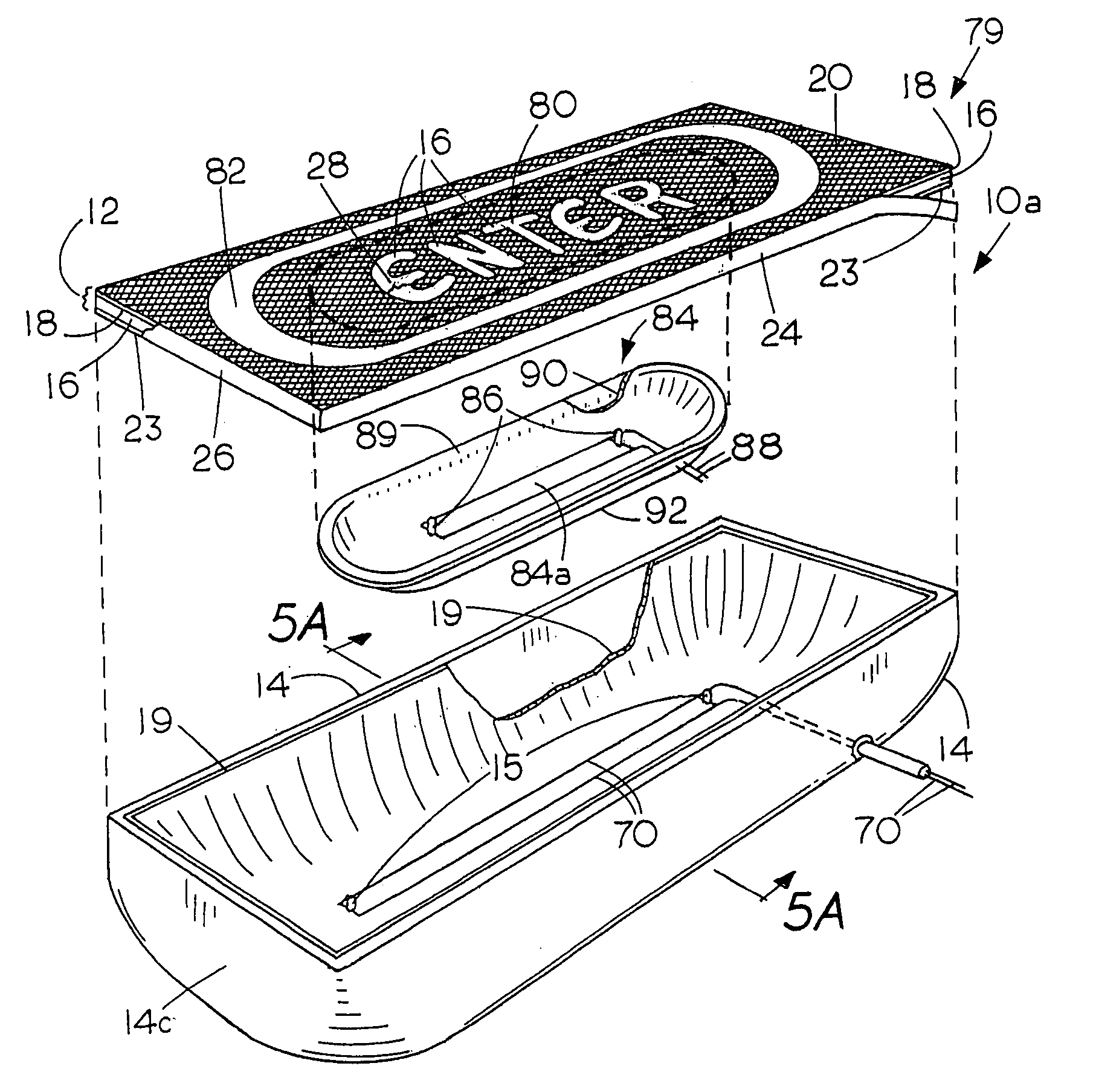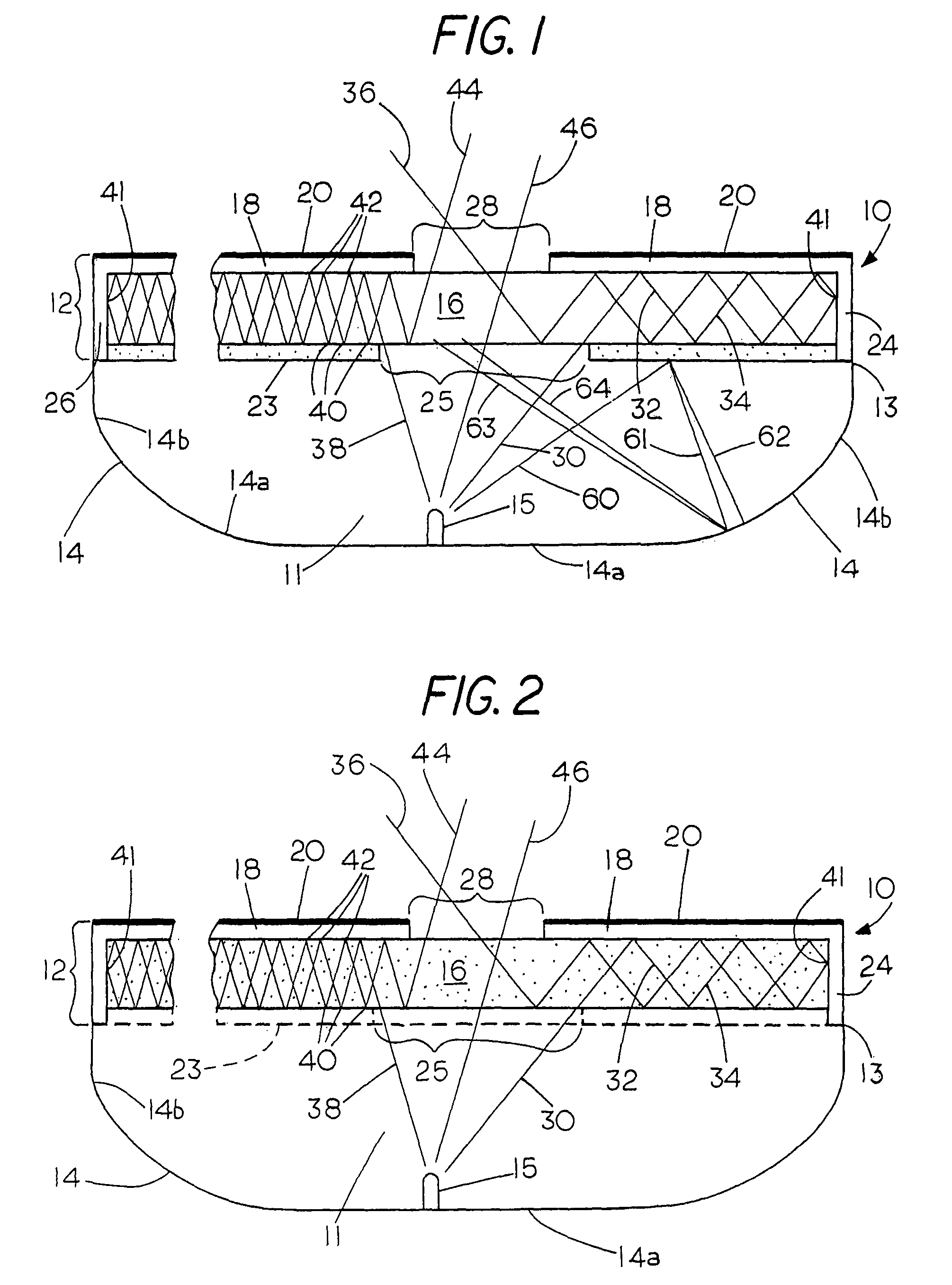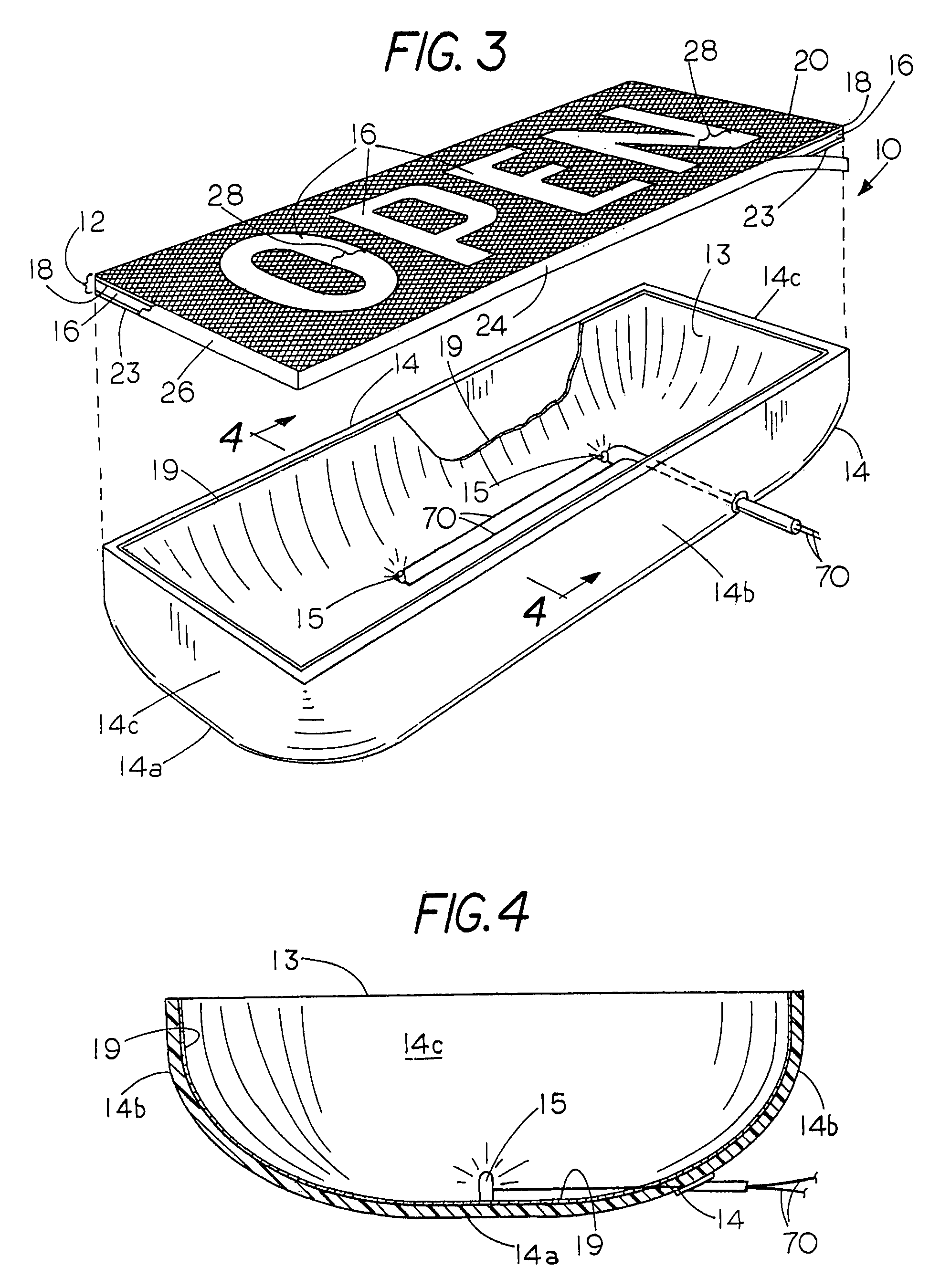Display sign adapted to be backlit by widely spaced light emitting diodes
a diode light and backlit technology, applied in the direction of instruments, lighting and heating equipment, planar/plate-like light guides, etc., can solve the problems of high operating and maintenance costs, and high maintenance costs. the effect of 30% or more annually
- Summary
- Abstract
- Description
- Claims
- Application Information
AI Technical Summary
Benefits of technology
Problems solved by technology
Method used
Image
Examples
Embodiment Construction
[0027]Refer now to FIGS. 1 and 2 which illustrate the major components of the invention and include light rays to show diagrammatically the operation of the invention. In FIG. 1 a backlit display sign indicated generally by the numeral 10 includes a sign front face cover element 12 on which a visible display is seen from above in this case and a rear sign enclosure element 14 having an open wide mouth 13 which is covered by the face cover element 12 to define a light chamber 11 between them that contains a light source, in this case an LED 15 of a suitable commercially available type such as a top-emitting LED, for example a Lumileds Luxeon Star I, III and Rebel LED for emitting white, bluish white, or colored light as desired. Commercially available LED's can be selected to provide desired color. The LED 15 typically provides more than 20 lumens.
[0028]The front face cover 12 includes an optically transmissive self-supporting rigid sheet of transparent acrylic plastic 16 which is su...
PUM
 Login to View More
Login to View More Abstract
Description
Claims
Application Information
 Login to View More
Login to View More - R&D
- Intellectual Property
- Life Sciences
- Materials
- Tech Scout
- Unparalleled Data Quality
- Higher Quality Content
- 60% Fewer Hallucinations
Browse by: Latest US Patents, China's latest patents, Technical Efficacy Thesaurus, Application Domain, Technology Topic, Popular Technical Reports.
© 2025 PatSnap. All rights reserved.Legal|Privacy policy|Modern Slavery Act Transparency Statement|Sitemap|About US| Contact US: help@patsnap.com



